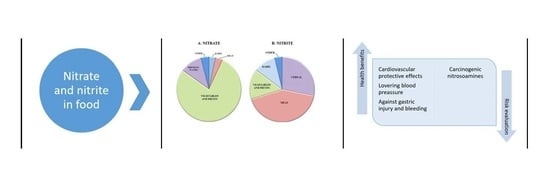Nitrates/Nitrites in Food—Risk for Nitrosative Stress and Benefits
Abstract
Share and Cite
Karwowska, M.; Kononiuk, A. Nitrates/Nitrites in Food—Risk for Nitrosative Stress and Benefits. Antioxidants 2020, 9, 241. https://doi.org/10.3390/antiox9030241
Karwowska M, Kononiuk A. Nitrates/Nitrites in Food—Risk for Nitrosative Stress and Benefits. Antioxidants. 2020; 9(3):241. https://doi.org/10.3390/antiox9030241
Chicago/Turabian StyleKarwowska, Małgorzata, and Anna Kononiuk. 2020. "Nitrates/Nitrites in Food—Risk for Nitrosative Stress and Benefits" Antioxidants 9, no. 3: 241. https://doi.org/10.3390/antiox9030241
APA StyleKarwowska, M., & Kononiuk, A. (2020). Nitrates/Nitrites in Food—Risk for Nitrosative Stress and Benefits. Antioxidants, 9(3), 241. https://doi.org/10.3390/antiox9030241






